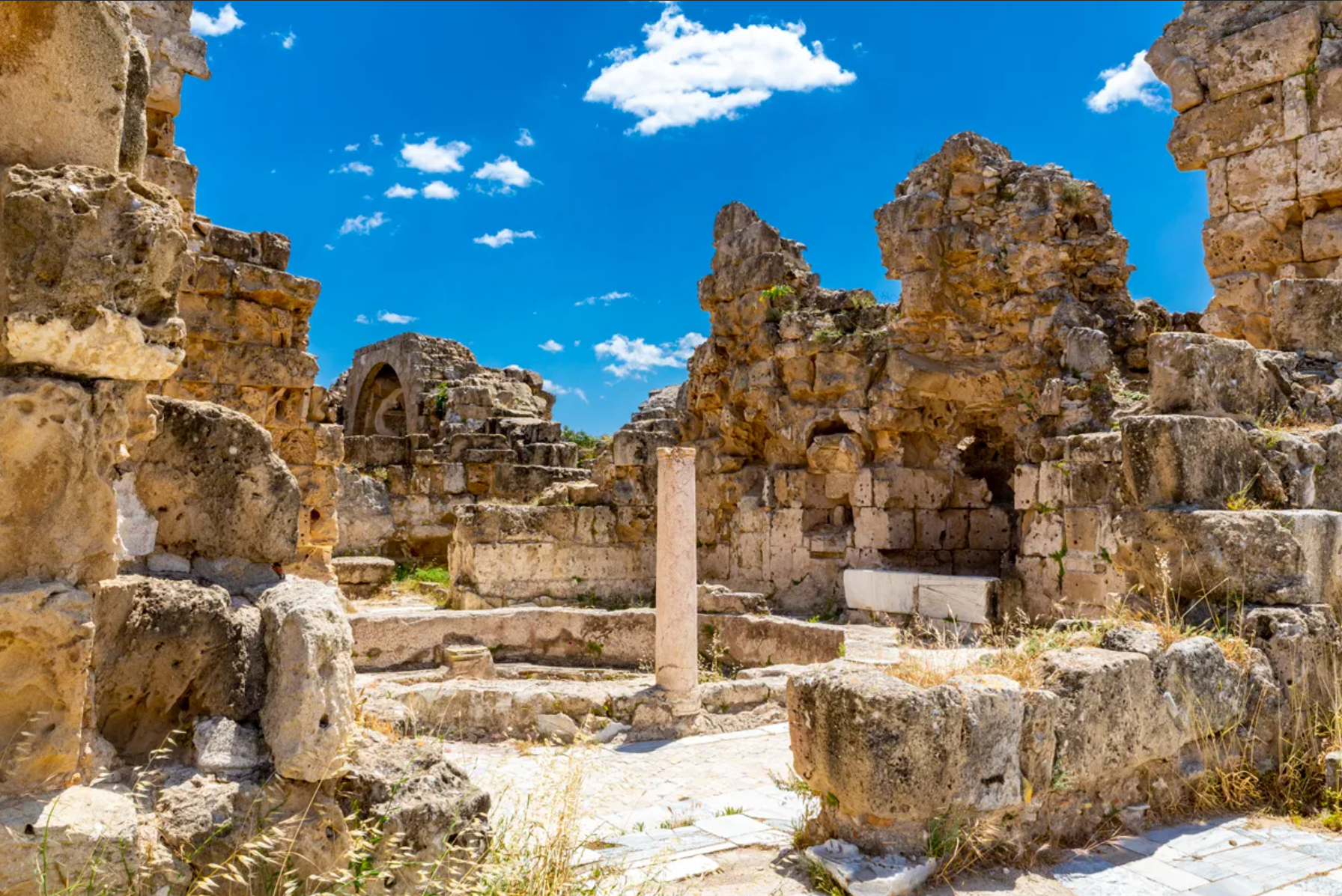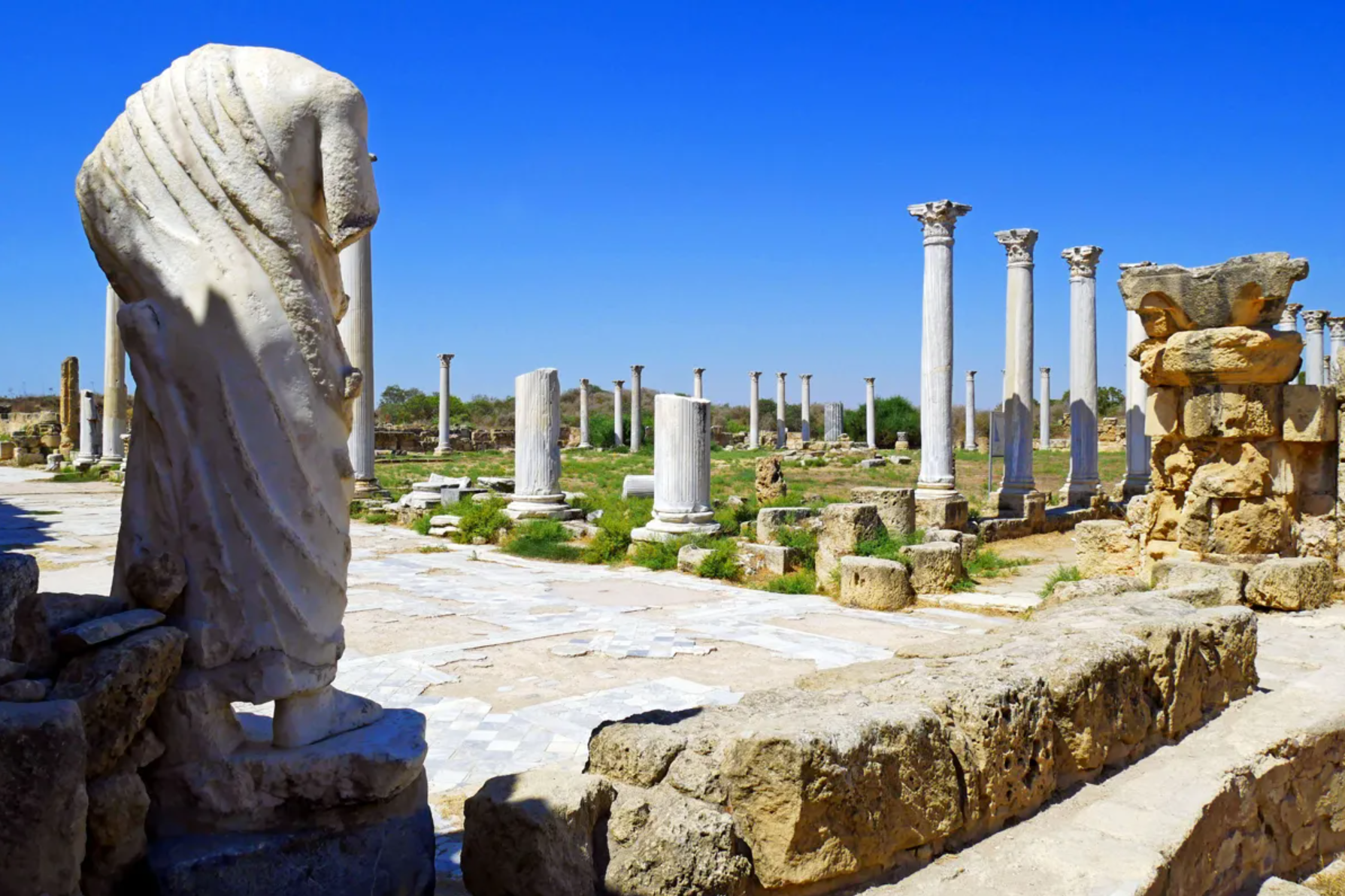


The earliest archaeological finds go back to the eleventh century BC (Late Bronze Age III). The copper ores of Cyprus made the island an essential node in the earliest trade networks, and Cyprus was a source of the orientalizing cultural traits of mainland Greece at the end of the Greek Dark Ages, hypothesized by Walter Burkert in 1992.
A large city located on the eastern side of the island north of Famagusta, it survived successive occupations by many dominant groups over the course of its history, including Assyrians, Egyptians, Persians, and Romans, but eventually succumbed to the forces of nature. Today this site extends over an area of one square mile extending along the North Cyprus coast and inland, revealing a glimpse back into a time whilst still hiding its core, buried and yet revealed. One tradition claims Salamis was founded by tribes arriving from Anatolia during a period of migration near the end of the Bronze Age, who were joined by Achaeans arriving from Cilicia. According to Homeric legend, Salamis was founded by archer Teucer from the Trojan War – the son of King Telamon whose second wife Hesione was the daughter of King Laomedon of Troy. This lineage made Teucer the cousin of the legendary Hector and Paris of Troy, however, Teucer fought against them in the Trojan War.
The first coins minted in Salamis were in the 6th century BC during the ruling of the Persian Empire, until the march of Alexander the Great into Asia Minor. However, his early death resulted in the empire being split, with Cyprus falling to Ptolemy and the fortunes of this city began to wane. During the Roman periods, Salamis again became an important trading center with ships arriving from all over the world, making it a major hub of activity. Although Paphos was the official capital of the island, Salamis was the most important commercial city, stretching two kilometers along the shoreline and a kilometer inland. Most of the excavations at Salamis today reveal remains dating from this time. For many years, the city was also treated as a source of building materials, and during the Venetian period, many columns and pieces of sculpture were removed from the site. Shifting sands however encompassed most of the city and protected it from the hands of looters. The first real-scaled excavations commenced in the 1950s.
The center of Salamis during the Roman period was to the north of the city, where the present-day entrance to this enormous site is located. Excavations so far include the gymnasium and theatre which have been extensively renovated. Following the great earthquake of 76 AD, it was built by the great Roman Emperor Trajan and his cousin Hadrian, who also went on to build the former defensive fortification of the Roman province of Britannia, commonly known as Hadrian’s Wall. On the floor at the southern entrance to this area, an inscription of the middle Hellenistic date appears to attest to the existence of other gymnasiums on the same site, in the north of the city.
The theatre of Salamis lay undiscovered till 1959. At that time, the decision was made to renovate it so that it could be once again used for theatrical performances, a role which it maintains to this day. Probably built under the reign of Augustus during the first years of the Roman Empire and finished during the second century AD, there are many beautiful artifacts in its vicinity as well. Unlike most other Roman theatres which face towards the sea, this one uniquely faces inland. Furthermore, its structure is unusual in that Roman theatres were normally built into a convenient hill, which made construction much easier, however, this site at Salamis is free-standing. The auditoriums' seating area or cave was constructed out of limestone and supported by arches – only a few of the original seats survive today, with eight rows of fifty seats remaining in this 15,000-seating capacity build. The stage building holds various rooms and corridors for orchestras and actors and would also have served as the backdrop for performances.
